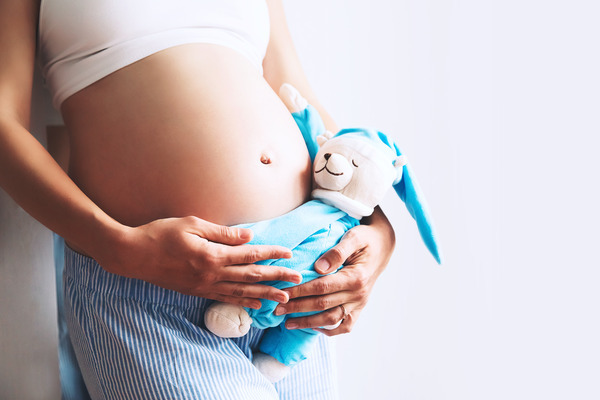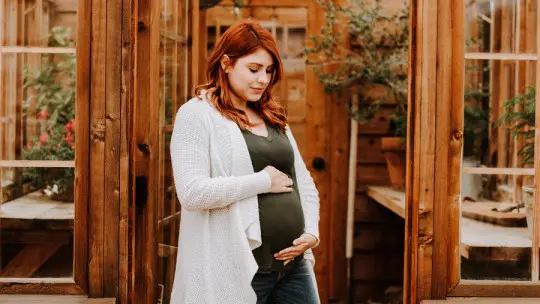
Bringing a life into the world is for many people one of the most beautiful experiences of their lives. Now, this is true for those who have wanted to have a child and are prepared for it, people who have matured and planned the conception of a son or daughter.
Other people find themselves in a situation where they become pregnant by accident, or although they want to have children in the future, they are not yet ready for it. This is the case of teenage pregnancies, which can have great repercussions for the person who remains in state. It is about this state that we are going to talk about throughout this article.
Pregnancy in adolescence
We consider that a pregnancy is adolescent when it occurs between 10 and 19 years of chronological age, regardless of the level of physical development of the adolescent in question. This life stage is in itself a time of great changes at all levels: the body grows and changes to go from child to adult, our mind and cognitive abilities develop more and more. However, the emotional sphere and mental maturity usually take much longer to develop.
The adolescent is in a process of searching for identity, to know who he is and what his role is in the world. Little by little you will face new demands and social experiences. Among them we find the first loves and relationships, and frequently also the first sexual relationships. In fact, it is known that a high proportion of citizens began having sex before the age of fifteen.
However, in some cases these first experiences are highly impulsive and do not involve experimentation that takes into account the risks of their actions, something that when it comes to sex can lead to early pregnancy. This occurs throughout the world, although it is more visible in developing countries or countries with low educational levels.
Pregnancy is the biological process through which an egg fertilized by a sperm develops and grows in the mother’s womb for approximately nine months until the moment of delivery. This process triggers a series of physical, organic and even psychological and behavioral changes in the parent, aimed at promoting said growth and the subsequent arrival into the world of the new creature.
It is also a risky process, since it involves a strong investment of resources by the maternal body, and in a body that is still in formation this can have serious risks. Likewise, even if having a child is carried out successfully, it also implies a high level of responsibility and capacity, such that a teenager could hardly hold it without any help.
Why at such a young age? Risk factor’s
The young adolescent has a functional reproductive system and is capable of entering a state of pregnancy, something that means that if any type of sexual relationship occurs at this age, there is a risk of becoming pregnant.
Although some teenagers become pregnant consciously and planned Most teenage pregnancies occur in the context of an involuntary incident, either due to not having used any type of protection or because it has been used ineffectively or has broken/failed. Thus, in the majority of cases we are facing an unwanted pregnancy.
In this sense, although finding a single cause for why they occur is not feasible (since it is a multi-causal phenomenon), it is necessary to take into account that there are multiple risk factors that can influence when a pregnancy occurs in the adolescence.
The first of them is the age at which first sexual relations begin. In this sense, it has been observed that adolescents with sexual initiation at twelve or thirteen years of age have a probability that can exceed 90% of becoming pregnant during adolescence.
Another risk factor closely linked to the previous one is the presence of non-existent or poorly integrated sexual education, in which sex is a taboo about which nothing is known or about which the risks and possible consequences are unknown. Likewise, not knowing the existence or how to use prophylactic methods, their low availability or high price, or the underestimation of their importance is also usually a risk factor.
Other common risk factors are educational and economic level in which it has been observed that there is a greater tendency towards teenage pregnancies in populations with fewer resources and access to education.
Furthermore, the consumption of alcohol and/or other psychoactive substances favors having unprotected relationships. Social exclusion, the lack of life goals or hopes of improving one’s situation, or suffering from some disorders such as depression or bipolar disorder also facilitate this.
Another element to take into account is that exposure to a parental model in which children have been had as a teenager also makes it easier to replicate said model, as well as cultural or religious beliefs in which a woman’s role is to give birth. since youth. Also lack of support from family, that it is dysfunctional, that there is negligence, abandonment or lack of affection are risk factors. The same happens if the woman is immersed in a context in which violence or contradiction abounds when it comes to sex.
Finally, it should be taken into account that some adolescents become pregnant after having suffered some type of sexual abuse or rape. Furthermore, in some cases people who have suffered from them in childhood may have normalized sexual contact at a young age, with these cases having a higher risk of teenage pregnancy. Likewise, child marriages also usually lead to this type of pregnancy.
Consequences and biological complications of pregnancy at this stage
Regardless of how the pregnancy occurred, when it occurs during adolescence, the pregnant young woman is in a situation considered high risk for both the baby and herself since although their body is biologically capable of conceiving, they have not yet completed their physical development.
Among the different risks that exist at a biological level we can find the possibility of suffering from anemia that can complicate the health of the mother and the fetus, the appearance of spontaneous abortions (the probability of which is much higher than in an adult) or premature births or infections. .
Likewise, and although it may vary depending on the health measures available in the locality in which one lives, a pregnancy before the age of fifteen doubles the risk of dying during childbirth in relation to adult women (in fact, it is a of the most common causes of death in adolescents). Postpartum bleeding and hemorrhages are more likely to occur.
It is also common for them to suffer from high blood pressure, as well as a greater probability of contracting a sexually transmitted disease. In addition, the mother’s own growth may stop or slow to such an extent that short stature and obesity may appear.
Babies born to adolescents have a higher risk of being born underweight and prematurely, and it has been observed that compared to those born to fully formed adults, these babies have a higher proportion of intellectual disabilities, malformations, developmental problems or neural tube defects. in addition to a greater probability of dying before the first year due to sudden death. In addition it is more common for them to present minor infections.
Psychological and social repercussions
In addition, getting pregnant during adolescence also has great psychological and social repercussions. To begin with, a teenage pregnancy is usually met with a reaction from family, friends and the social environment in general, which can be very aversive for the young woman. This may feel or even be really rejected by those closest to her and pressured to make a decision.
They are also in a situation in which academic problems and school failure are more likely to appear, and it is more difficult for them to access higher education or obtain jobs that require it. Their employment is usually more precarious and they tend to have worse economic and social conditions.
In addition, A decision must be made regarding whether to continue with the pregnancy or carry it out, both options having repercussions on the adolescent’s psyche and a social effect on her environment. In many cases, adolescents do not feel qualified to be mothers, and rejection of the baby may occur once it is born.
There is also a greater risk of falling into drug use and antisocial acts, as well as suffering from depression, anxiety, uncertainty, and problems with self-esteem and social adjustment.
In addition to this, a teenager pregnant by another may encounter serious relationship problems or even be abandoned, given that it has been shown that teenagers tend to see said pregnancy as a limitation to their future. Generally according to several studies A majority of adolescents in this situation usually tend towards the option of aborting.
Prevention and prophylaxis of pregnancy
Pregnancy in adolescence is, as we have already said, a considerable risk for both the mother and the future baby. That is why it is necessary to establish different measures in order to prevent it from happening, as well as to protect and prevent pregnant minors from suffering harm.
The first step to achieve this involves the establishment of educational policies and plans that integrate sexual education in classrooms from an early age, so that we can work on what sex is and the risks that doing it without protection can entail (not only pregnancy but also venereal diseases) in addition to explaining what prophylactic measures exist and how to use them. Highlights the importance of condom use.
It is important to make prophylaxis easily accessible to the entire population regardless of their economic capacity. Also the increase in services dedicated to family planning and care for pregnant women can be of great help, as well as the facilities to obtain oral contraceptives if necessary.
At the family level, it is also of great importance to work on the issue of sexuality, so that the family allows the adolescent to express their fears and doubts as well as resolve their doubts and questions. It is important that this environment is communicative and open.
Finally, it is important to treat, if necessary, pregnant adolescents who present problems derived from their condition, such as depression and loss of self-esteem or lack of social support, both from the environment and from institutions and various organizations. professions in the health and social branches.








